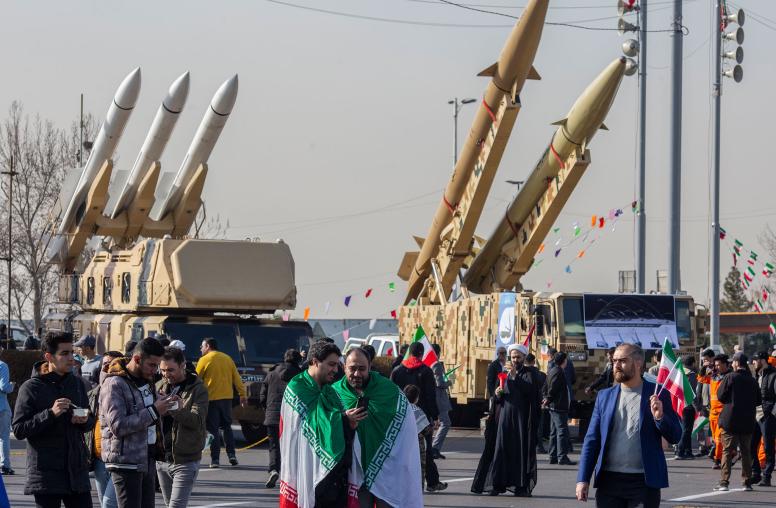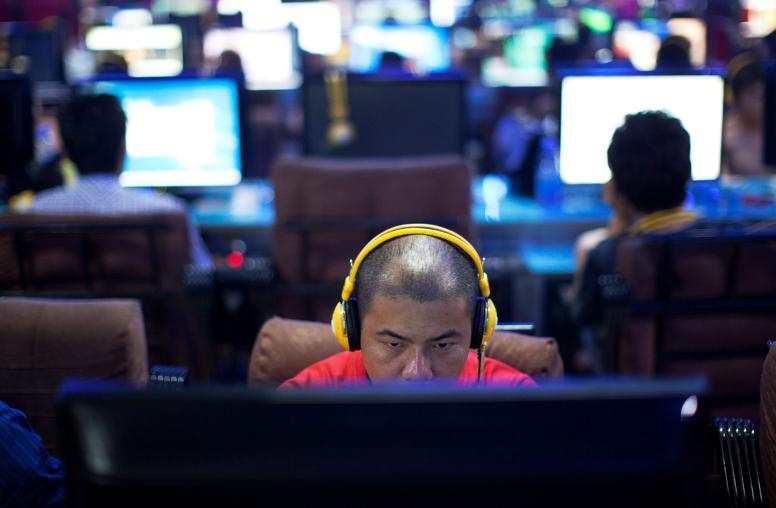What Pelosi’s Trip to Taiwan Tells Us about U.S.-China Relations
Clear U.S. messaging and careful monitoring of Chinese rhetoric and actions are vital to avoiding escalation over Taiwan.
This week witnessed the visit of the most senior elected American official to the island of Taiwan in a quarter century — a visit surrounded in controversy and unfolding against the backdrop of an increasingly fraught U.S.-China relationship.

The media-driven speculation surrounding the lead up to U.S. Speaker of the House of Representatives Nancy Pelosi’s visit to Taiwan contributed to an alarmist atmosphere in which multiple experts and analysts warned of a dangerous crisis, which threatened to escalate into a military confrontation between the United States and China. The visit is not without precedent. Members of Congress routinely travel to Taiwan, although the last speaker to visit the island was Newt Gingrich in 1997.
Stepping back from the pre-trip hype and the intense attention focused on Pelosi’s actual visit to Taiwan on August 2 and 3, what does the episode tell us about the state of U.S.-China relations? Three points come to mind. First, it demonstrates the central and contentious place Taiwan now occupies in relations between the United States and China. Second, the ominous trends that Washington and Beijing perceive are more important that the specifics of any single episode. Third, nevertheless, one pivotal episode could turn out to be a tipping point in U.S.-China relations — becoming the event that pushes Beijing on a trajectory to war.
Taiwan is Center Stage in U.S.-China Relations
In 2022, Taiwan is ground zero in heightened great power competition between the United States and China. While the island has long been the most contentious issue in U.S.-China relations and the location of multiple crises during the 1950s, in the aftermath of President Richard Nixon’s visit to China in 1972, both Washington and Beijing worked hard to manage the Taiwan issue. Insisting that Taiwan is part of China, Beijing demanded that Washington adopt a “one China” policy as a precondition for rapprochement, and successive U.S. administrations tried to balance avoiding unduly antagonizing China as they simultaneously sought to provide continued support to Taiwan. Until Washington and Beijing established formal diplomatic relations in 1979, Washington retained ambassador-level ties with Taipei officially recognized as the Republic of China. Thereafter, Washington maintained quasi-official relations with Taipei under the creative framework of the Taiwan Relations Act (TRA).
While most Americans have viewed ongoing U.S. ties with Taiwan as prudent and positive, providing much-needed stability in the Taiwan Strait, most Chinese have perceived American actions as contravening the spirit if not the letter of multiple formal U.S. commitments to observe a “one China” policy. From Beijing’s perspective, Washington has ignored the contents of three U.S.-China communiques, which leads it to believe that successive administrations were negotiating in bad faith. From Washington’s perspective, U.S. commitments were caveated and conditional. Caveated in the sense that a parade of presidents never endorsed China’s position, rather they merely acknowledged it; conditional in the sense that Washington expected that Beijing would conduct cross-strait relations peacefully and without coercion. This expectation is explicitly articulated in the TRA: “peace and stability in the area are in the political, security, and economic interests of the United States, and are matters of international concern. [Moreover] … the United States decision to establish diplomatic relations with the People's Republic of China rests upon the expectation that the future of Taiwan will be determined by peaceful means…”
Trends Trump Individual Events
Second, with an overwhelming focus on the specific merits of Pelosi’s visit to Taiwan, what can get overlooked is that neither Beijing nor Washington views this high-profile episode in a vacuum. In short, context is everything. Both sides see the event as part of broader trends in the perceived policies of the other. Each side stresses the importance of maintaining the status quo vis-à-vis Taiwan while blaming the other side for concentrated efforts to change the status quo. While in earlier decades, both Washington and Beijing perceived trends in bilateral relations moving in the right direction and held overall positive images of the other, since the 1990s, each side began to perceive trends going in the wrong direction and formed increasingly negative images of the other.
Recent research conducted by USIP suggests China perceives that the Biden administration has undertaken a significant shift in its Taiwan policy resulting in a concerted effort to qualitatively upgrade U.S. relations with the island. This perception is the polar opposite of the message that the Biden administration intended to signal to Beijing: that U.S. policy on Taiwan has remained unchanged and is completely consistent with the approach of prior administrations. Why the misinterpretation? Clear signaling and unambiguous messaging is exceedingly difficult in the current toxic climate of U.S.-China relations, which is rife with mutual suspicion and deep distrust.
Beware the Tipping Point to Come
Third, trends notwithstanding, beware of a future tipping point — an event that may push Beijing to cross the Rubicon and prepare to take military action against Taiwan. Malcolm Gladwell defines a tipping point as “the moment of critical mass, the threshold, the boiling point.” In the context of China, the United States and Taiwan, a tipping point refers to a point in time at which Beijing: (1) determines Taiwan’s trajectory has turned inexorably and irreversibly away from unification; (2) concludes its strategy of “peaceful reunification” has met with abject failure; and (3) decides that the time has come to focus wholeheartedly on unification by force. To be clear, this tipping point can be found in the minds of Chinese President Xi Jinping and his fellow members of the Chinese Communist Party (CCP) Politburo rather than in the rhetoric or actions of anyone in Taipei or Washington. Hence, the full responsibility for Beijing initiating hostilities would fall squarely on shoulders of Xi and other top echelon CCP officials.
Identifying this tipping point in real time could be exceedingly difficult especially given the opaque and secretive nature of China’s deliberative and decision-making processes. Indeed, it is very likely that the tipping point will only be evident ex post facto. Just as key decision points on China’s road to intervention in Korea in 1950 could only be documented by meticulous scholarship after the fact (the initial scholarship effort was conducted in the late 1950s based upon a judicious analysis of very limited open-source evidence), so pinpointing a 21st century Chinese tipping point on Taiwan may only be possible in hindsight. Fortunately, operational indicators and warnings of impending military action tend to be less difficult to discern in real time than a tipping point but lead times for the former can be relatively short.
What’s Next?
Although the dire warnings against the speaker’s visit to Taiwan were probably overwrought, the general sentiment behind them was not misplaced. In the immediate aftermath of Pelosi’s trip, China initiated a series of massive multi-day military exercises at multiple locations around Taiwan’s periphery, canceled or suspended some exchanges with the United States, and announced that unspecified sanctions would be imposed against the speaker and her family. The sum total of these actions was intended to signal the intensity of CCP leaders’ anger but at the same time calibrated — at least in their minds — to avoid further escalation. But, they are playing a dangerous game since Taiwan is the focal point of elevated great power competition and the most plausible location and trigger for a major military confrontation between the United States and China.
Both Washington and Beijing perceive that trends in bilateral relations vis-à-vis Taiwan are moving in the wrong direction and each blames the other for instigating this dangerous trajectory. More ominously, Beijing may soon reach a watershed moment regarding Taiwan, or it may have already reached this point and Washington has yet to recognize it.
Future scholars and analysts may well identify Beijing’s Taiwan tipping point as Pelosi’s August 2022 visit to the island. But, in the immediate aftermath of the visit, careful attention ought to focus on close monitoring of Chinese rhetoric and actions, as well as unambiguous and consistent U.S. messaging. This effort is vital if the two countries are to avoid unintended escalation and unwanted war in the coming weeks, months and years.



